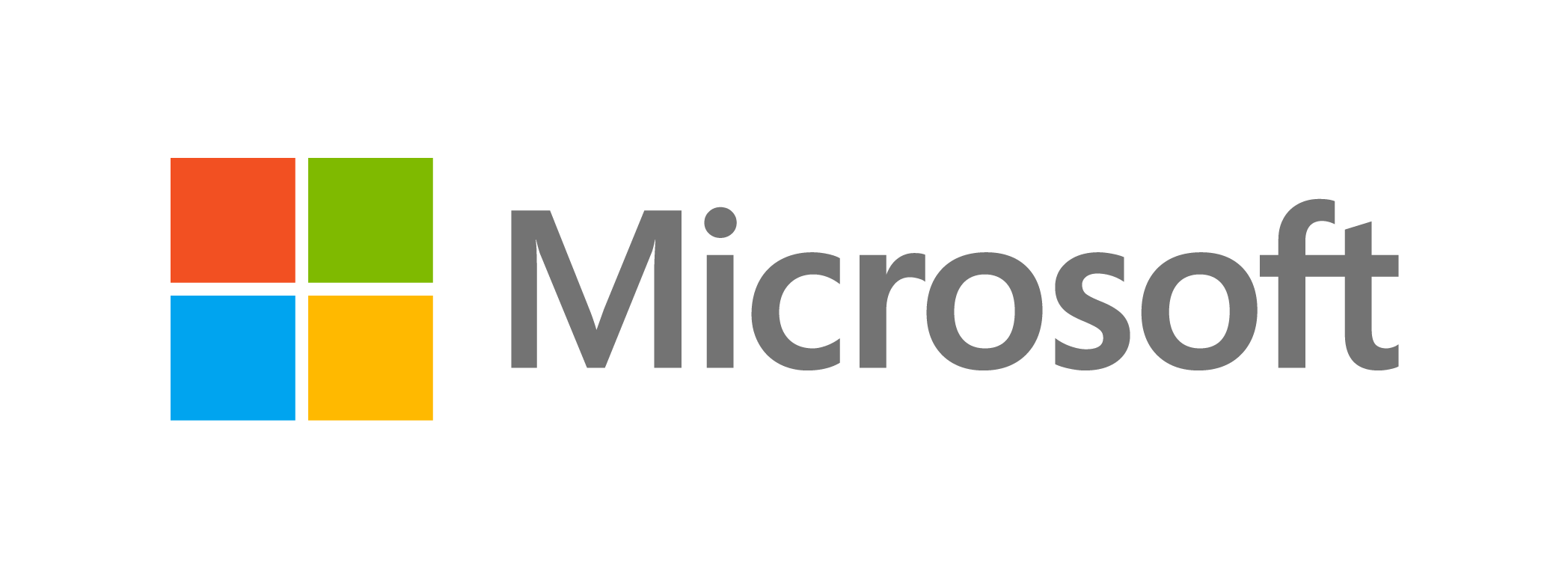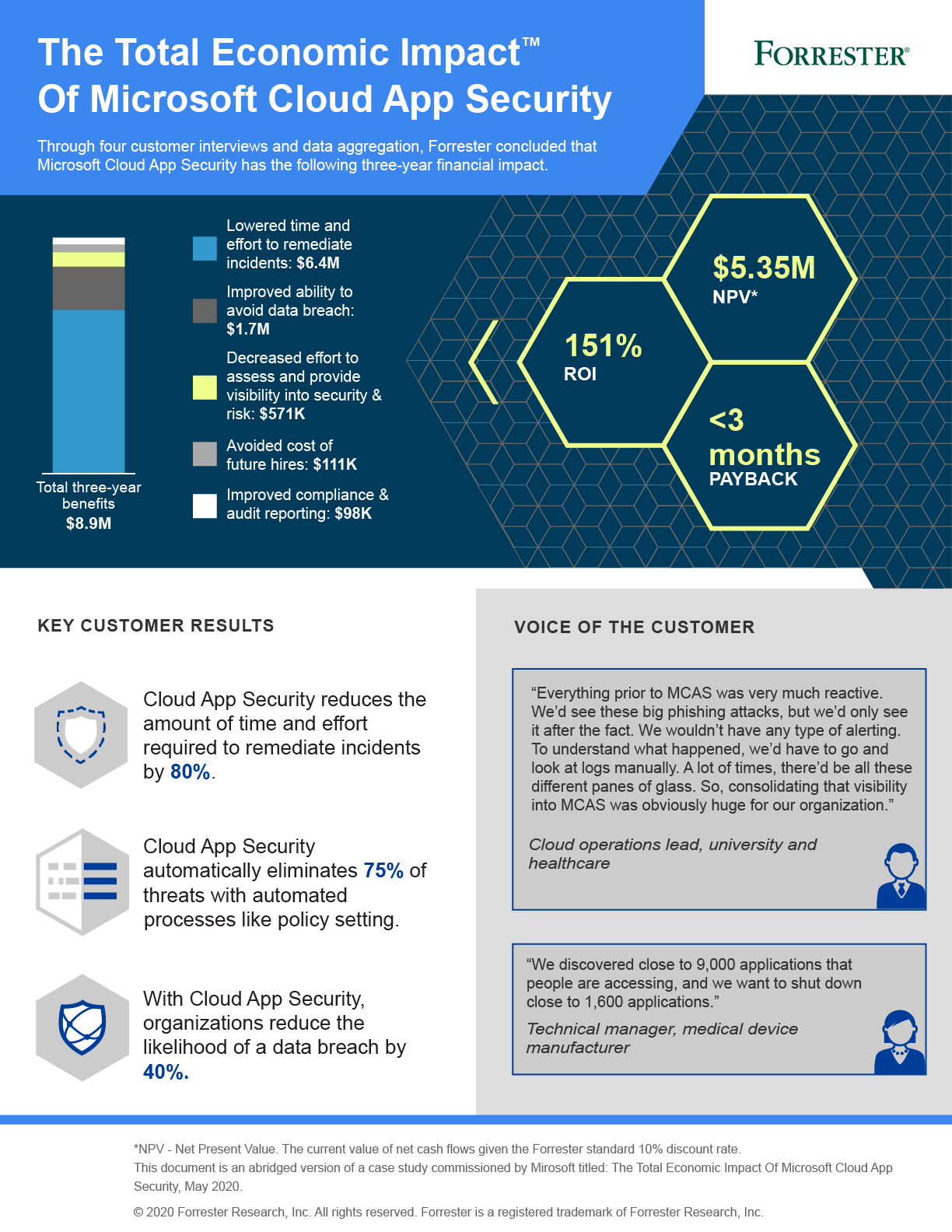Projected Benefits
-
Productivity savings from using Microsoft Teams platform:
$8.8M to $21.7M -
Savings from reducing burden on help desk and HR:
$525K to $787K -
Application development savings:
$231K to $363K
Key Findings
-
PROI
393% to 1,085% -
Project benefits PV
$9.5 million to $22.9 million -
Projected NPV
$7.6 million to $21.0 million -
Total costs
$1.9 million
Quantified projected benefits.The following present value (PV) quantified benefits are representative of those experienced by the companies interviewed:
-
Productivity growth enabled by Microsoft Teams platform leads to $8.8 million to $21.7 million savings in labor costs over three years.
Prior to using Microsoft Teams platform, organizations found that employees frequently switched between applications throughout a workday, including their email, instant messaging, and other tools needed to complete their daily tasks. The Teams platform transforms the experience by providing a central hub for existing tools and inspires the creation of new workflows and automations. This empowers workers to reduce app switching and be more efficient and saves each employee, on average, 15 to 25 minutes per day.
-
Use of bots to handle employee questions reduces the number of IT and HR support tickets by 10% to 15%.
Prior to the Microsoft Teams platform, employees frequently contacted the help desk, HR, or other dedicated resources for guidance on simple tasks. The Microsoft Teams platform allows the use of automated chatbots to deliver answers, which saves $525K to $787K over three years.
-
Development cost savings of $231K to $363K result from shifting internal application development to citizen developers in place of professional and IT developers.
The Microsoft Teams platform supports low-code authoring so business users can take on application projects. This shortens development timelines and reduces the total cost to develop applications.
-
The chance of a major security breach decreases.
Working with the Microsoft Teams platform delivers a 1% to 5% reduction in the likelihood of a major data breach, which can cause damage in the form of brand reputation, stock price, and cost of remediation efforts.
Unquantified benefits.The interviewed organizations experienced the following benefits, which are not quantified for this study:
-
Increased employee engagement.
Before using the Teams platform, employees frequently switched between apps and tools to complete daily tasks. This interrupted employees’ flow and contributed to their frustration. The easy-to-use productivity apps collaboration platform has become a landing zone for many daily activities, enabling more productive work and leading to a better employee experience (EX).
-
Improved insights to influence decision making.
The Teams platform enables integration with data visualization tools that help present real-time data in an easy-to-digest visual format. Simultaneous access to data in Teams channels or chats empowers users to access and analyze the information they need to make decisions quickly.
-
Better business outcomes.
As a hub for workplace collaboration, the Microsoft Teams platform creates opportunities to serve customers more efficiently and contributes to cost savings and new previously untapped revenue streams.
Costs.The interviewed organizations experienced the following risk-adjusted PV costs:
-
Enablement, training, and ongoing management.
A core group of IT and developers set up the Microsoft Teams platform, built custom tools, and enabled integrations with chosen applications (both Microsoft and third-party) over the course of six months, on average. At the same time, two change management FTEs (on average) ensured that the end users were familiar with the new platform capabilities. Two IT and development FTEs were dedicated to managing the platform. The time of all employees involved in the rollout and further platform management sums to a risk-adjusted, three-year PV of $1.9M.
-
Low-code development costs.
The interviewed organizations incurred ongoing costs of application development by business users, which amounted to a risk-adjusted three-year PV of $76,390.
Forrester modeled a range of projected low-, medium-, and high-impact outcomes based on evaluated risk. This financial analysis projects that the composite organization accrues the following three-year net present value (NPV) for each scenario by enabling Microsoft Teams platform:
-
Projected high impact of a $21.0 million NPV and projected ROI of 1,085%.
-
Projected medium impact of a $14.0 million NPV and projected ROI of 723%.
-
Projected low impact of a $7.6 million NPV and projected ROI of 393%.

